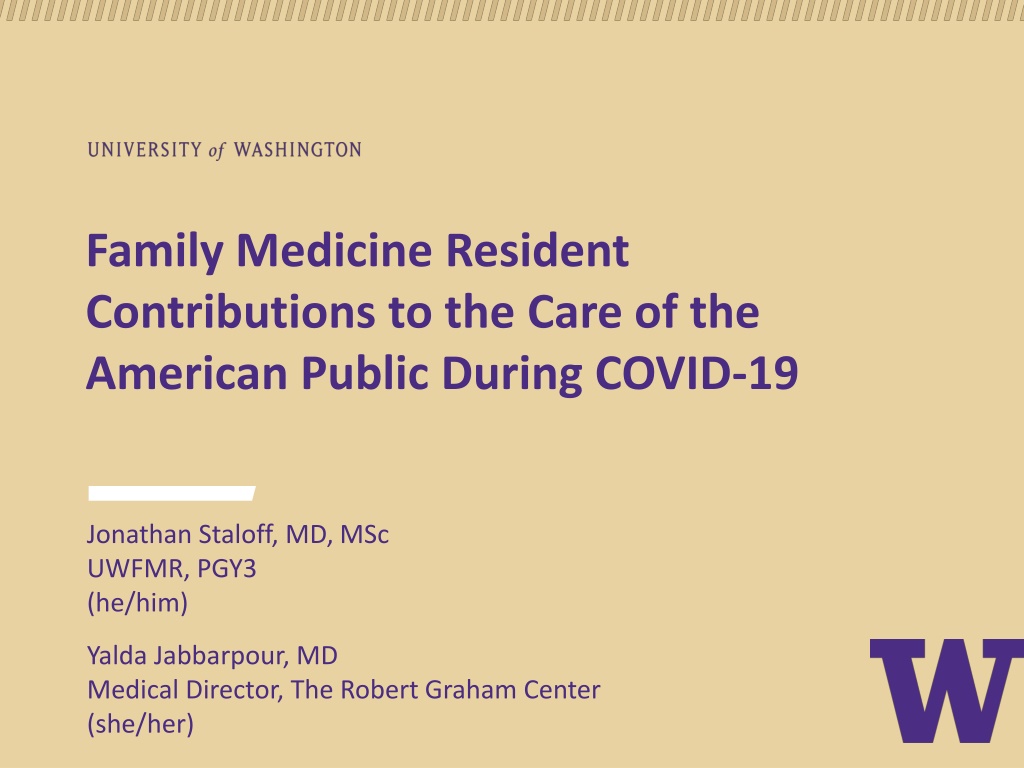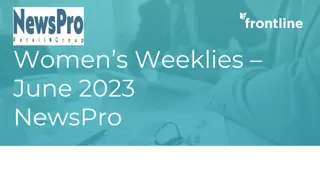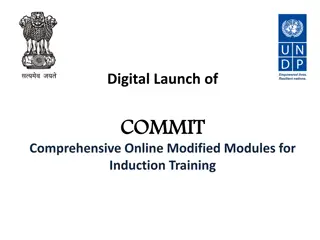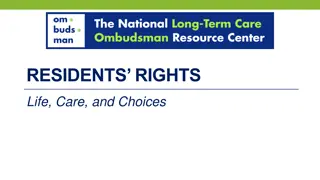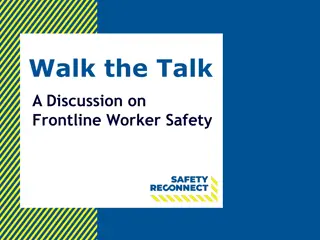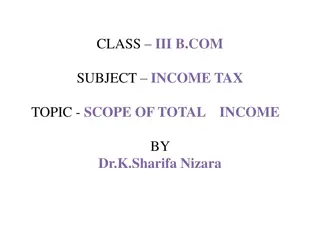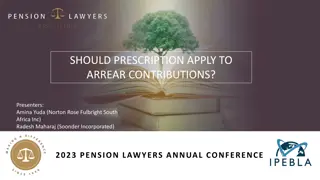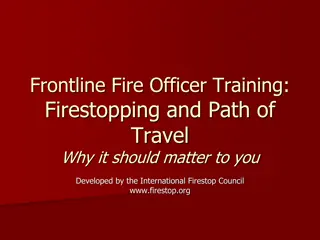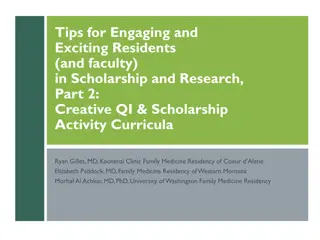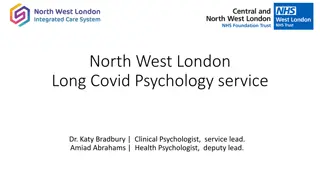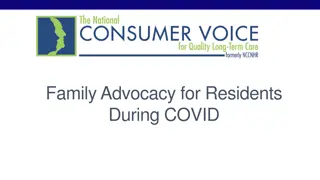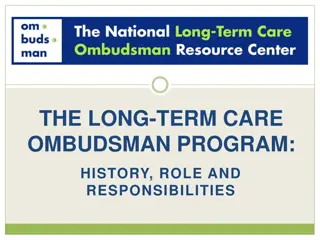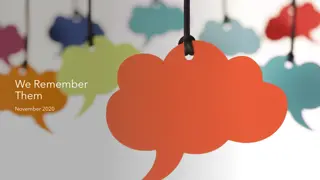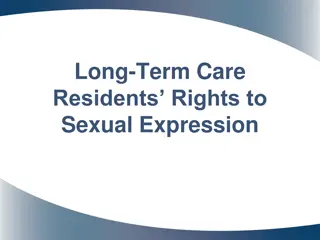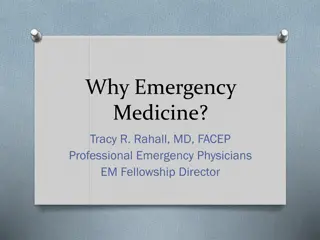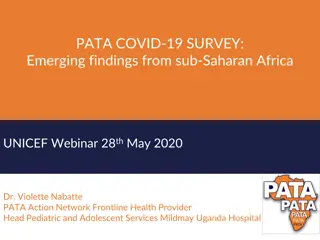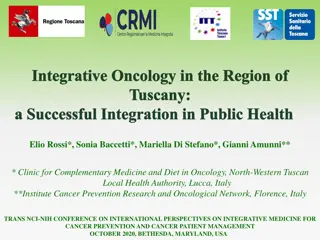Family Medicine Residents' Contributions to COVID-19 Care: Stories from the Frontline
Explore the firsthand experiences of Family Medicine residents during the COVID-19 pandemic, showcasing their contributions and the impact on their training. Residents from diverse U.S. residencies reflect on working in wards and ICUs, sharing stories of uncertainty, tragedy, hope, and humanity. Follow the narratives of Dr. Lu in Seattle, WA, and Dr. LaCount in Bronx, NY, as they navigate challenging situations with resilience and compassion.
Download Presentation

Please find below an Image/Link to download the presentation.
The content on the website is provided AS IS for your information and personal use only. It may not be sold, licensed, or shared on other websites without obtaining consent from the author. Download presentation by click this link. If you encounter any issues during the download, it is possible that the publisher has removed the file from their server.
E N D
Presentation Transcript
Family Medicine Resident Contributions to the Care of the American Public During COVID-19 Jonathan Staloff, MD, MSc UWFMR, PGY3 (he/him) Yalda Jabbarpour, MD Medical Director, The Robert Graham Center (she/her)
Disclosures > No financial disclosures
Background COVID-19 pandemic required medical trainees to serve on the front lines. There are no studies chronicling the contributions, experiences, and stories of individual Family Medicine residents. Objective is to capture the stories of how Family Medicine residents contributed to COVID-19 care and how the pandemic impacted their training experiences.
Methods Case series of trainees from four different residencies within the United States. Residencies represented diversity of: Geography Rurality vs urbanicity Structure (academic hospital vs community based) 30-60 minute semi-structured interviews Interviews took place between November 19-December 16, 2021 and were recorded and analyzed for themes. Interviewees permitted their names and identities to be shared. Approved by the American Academy of Family Physicians Institutional Review Board.
Results Study Participants Resident Interviewees Jessica Lu, MD University of Washington Family Medicine Residency. Seattle, WA. Class of 2021. Amy LaCount, MD Montefiore Family and Social Medicine Residency. Bronx, NY. Class of 2022. Tasha Harder, DO North Country Healthcare Family Medicine Residency. Flagstaff, AZ. Class of 2023. Franklin Niblock, MD University of Colorado Family Medicine Residency. Denver, CO. Class of 2021. Chief Resident 2020-2021 Academic Year.
Dr. Lu in Seattle, WA Uncertainty: I remember being in Seattle, the first major city to be hit by COVID, at first there were no protocols to go by. There was just a google doc that was being updated every five minutes. Tragedy: I worked in the COVID-19 ICU for one week, I was doing night shifts. I remember I showed up at 6pm, and I had to pronounce a patient dead at 615pm That was my first day. Hope and Humanity: I remember seeing a patient extubated and the first thing he wanted was Wendy s chicken nuggets. The team was like we re going to get you those Chicken nuggets.
Dr. LaCount in Bronx, NY A Shift in Mentality: We had to rise to the challenge I had to trust myself in a way I didn t have to yet in my training. The Surge: I took care of 12 COVID positive patients per day, every day, from March through June or July was just an everyday onslaught, it s hard to illustrate. Disparities and Systemic Racism: I had eight patients die under my care, most of whom were Black or Latina. Two thirds of our residents were Black they were seeing people who disproportionately looked like their grandmas and grandpas die, and not being able to give them the care they needed.
Dr. Harder in Flagstaff, AZ An Abrupt Transition: My whole training has been colored by COVID-19 I had an online medical school COVID graduation, and as soon as I got to residency I felt like we were boots on the ground, we were needed now...There was no here s how to figure out certain things. It was just go. An Absence in the Room: A large part of training is supposed to focus on how to talk to families in the room about their loved one s care. We never learned how to address the mom or child or spouse in the room. We learned how to make phone calls.
PPE and Personal Safety I remember walking into my first COVID-19 positive room, and that was terrifying for me. I had a newborn at home and I wanted to minimize exposure for her I didn t know how to gown appropriately yet. After watching donning and doffing videos for 30 minutes, I walked in. Dr. Niblock There was this huge effort by residents to obtain masks from the community. From artists, from local companies, and community members. We created a distribution schedule to give masks to the residents who needed them most. Dr. LaCount
Beyond The Hospital: Family Medicine Residents in the Clinic and Community
Telemedicine Although seeing patients virtually was not ideal, it was a testament to the healthcare system that we were able to go from seeing no patients virtually to 80- 90% of visits in a matter of weeks. Dr. Niblock People with limited access to health literacy, limited access to technology, limited access to English, took a hit. I definitely felt that the patients we were seeing on telemedicine, they were white, middle class individuals, who were tech savvy themselves. I definitely saw a drop in my limited English proficiency patients. Dr. Lu
Mental Health in Primary Care A lot of the people coming into the clinic had lost someone to COVID. Losing someone to COVID was so traumatic because they were being reminded of that grief all the time, and people would come in still traumatized without having had the space to really process anything. Grieving is taking a lot longer for folks and people had reduced communities for trying to heal. A lot of patients in my panel go to church and a lot of the churches were shut down so people were losing their community for support. Dr. LaCount
Public Health and the Vaccine We re valuable as family medicine physicians because people value our opinions and trust us We re used to seeing vaccine hesitancy in primary care but this came at a new level. This far in I m encouraged that there are patients who have questions about the vaccine and I answer their concerns and they later get the vaccine. I think that speaks to the importance of a relationship with a family medicine doctor. Dr. Niblock There s a lot of misinformation about vaccines.In our community there s so much mistrust toward medicine, which makes sense, because Black and Brown people have been murdered in the service of advancing medical research. It s tricky to talk to patients about this, because not being Black or Brown myself, I understand why patients may be hesitant to take my advice. Dr. LaCount
The Toll Taken and Burnout It was my goal (as Chief Resident) to advocate for my co-residents to make sure they had the education and training and personal time they need while supporting the needs of the healthcare system. That was always a difficult balance. Dr. Niblock We didn t sign up to risk our lives. We are not firefighters or police officers. We are healthcare providers. Now we are asking the public to help by getting the vaccine and when they re not it feels like a slap in the face. Dr. Harder Interpersonal bonding took a big hit. We used to have all in-person didactics that were now virtual. That definitely impacted how frequently we can see each other and support each other. Dr. Lu
Conclusions The contributions of Family Medicine residents to the care of the American public during COVID-19 were/are profound, heterogeneous, and in all healthcare settings throughout the United States. COVID-19 has impacted the training experience of FM residents and has taken a real toll on them. Family Medicine contributions during COVID-19 in many ways reflects the history of COVID-19 in the US, and the critical role trainees and Family Medicine physicians have in the US healthcare system.
Acknowledgements Thanks to the Robert Graham Center for the opportunity to do this research and mentorship during a Visiting Scholar month. Thank you to the interviewees and all Family Medicine Residents for their service. Remembrance for all who lost their lives to COVID-19, lost a patient or loved one to COVID-19, or have had their lives changed by this pandemic.
References 1. https://www.aafp.org/dam/AAFP/documents/medicaleducationresidency/thematch/20 21-Match-Results-for-Family- Medicine.pdf. Accessed February 19, 2022. 2. Farr S, Berry JA, Berry DK, et al. The Impact of the COVID-19 Pandemic on Resident Physicians Well-Being in the Surgical and Primary Care Specialties in the United States and Canada. Cureus. 2021;13(11):e19677. Published 2021 Nov 17. 3. Awadallah NS, Czaja AS, Fainstad T, McNulty MC, Jaiswal KR, Jones TS, Rumack CM. The impact of the COVID-19 pandemic on family medicine residency training. Fam Pract. 2021 Aug 27;38(Suppl 1):i9-i15. 4. https://www.cdc.gov/museum/timeline/covid19.html#:~:text=January%2020%2C%2020 20%20CDC,18%20in%20Washington%20state. Accessed February 19, 2022. 5. Thompson CN, Baumgartner J, Pichardo C, et al. COVID-19 Outbreak New York City, February 29 June 1, 2020. MMWR Morb Mortal Wkly Rep 2020;69:1725 1729. 6. https://www.cdc.gov/coronavirus/2019- ncov/coviddata/investigationsdiscovery/hospitalization-death-by- raceethnicity.html#footnote02. Accessed February 19, 2022. 7. https://www.gao.gov/products/gao-19-74r. Accessed February 19, 2022. 8. Miller AC, Arquilla B. Chronic diseases and natural hazards: impact of disasters on diabetic, renal, and cardiac patients. Prehosp Disaster Med. 2008 Mar-Apr;23(2):185-94. 9. Haley CM, Pera MF, Cantor J, et al. Changes in Health Services Use Among Commercially Insured US Populations During the COVID-19 Pandemic. JAMA Netw Open. 2020;3(11). 10. https://www.kff.org/coronavirus-covid-19/dashboard/kff-covid-19-vaccine-monitordashboard/. Accessed February 19, 2022.
